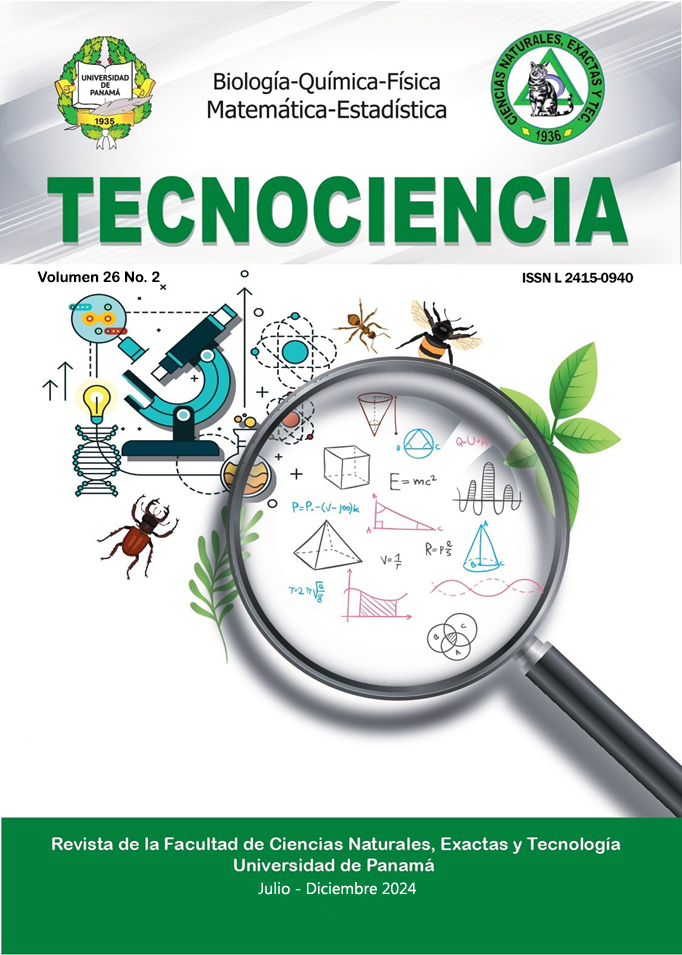

Copyright (c) 2024 Tecnociencia

This work is licensed under a Creative Commons Attribution-NonCommercial-ShareAlike 4.0 International License.
The first study was carried out on the birds of the Cerro Turega Water Reserve (RHCT), located in the Central Mountain Range, province of Coclé, Panama. The Reserve is part of the mountain chain of the central part of the isthmus of Panama and is part of the Mesoamerican Biological Corridor. Sampling was carried out between February and May 2021 in order to study the richness and diversity of birds in the RHCT. Data collection was carried out for 32 days, and three fog nets 12 m long and 2.5 m high were used, open from 7:00 am to 11:00 am. In the afternoon, between 1:00 to 5:00 pm, generalized searches and counts were carried out by point. 476 individuals of 100 species were recorded, included in 29 families and 10 orders. Among the most abundant species were the Grey-headed Chachalaca (Ortalis cinereiceps), Thick-billed Euphonia (Euphonia laniirostris), Red-legged Honeycreeper (Cyanerpes cyaneus), Crimson-backed Tanager (Ramphocelus dimidiatus), Southern Rough-winged Swallow (Stelgidopteryx ruficollis), Rufous-tailed Hummingbird (Amazilia tzacatl) and White-vented Plumeleteer (Chalybura buffonii). Among the species observed, nine are migratory, included in five families and two orders. Some migratory birds present: Broad-winged Hawk (Buteo platypterus), Swallow-tailed Kite (Elanoides forficatus), Scarlet Tanager (Piranga olivácea), Bay-breasted Warbler (Setophaga castanea), Canada Warbler (Cardellina canadensis), Black-and-white Warbler (Mniotilta varia), Yellow-green vireo (Vireo flavoviridis) among other species. In addition, 43 species considered threatened were identified, distributed in 12 families and seven orders. As endangered birds observed, we recorded Blue-headed Parrot (Pionus menstruus), Collared Aracari (Pteroglossus torquatus), Keel-billed Toucan (Ramphastos sulfuratus), etc. One of the main threats in the reserve is the deforestation and the use of agrochemicals for the crops. This pioneering study provides information for future research and surrounding areas, as it is now known that the RHCT has the appropriate habitat conditions for resident and migratory birds.